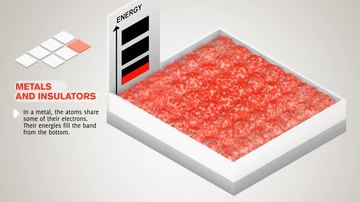Cyclic theory of the universe, in which the universe goes. Introduction to Solid State Physics (Wiley. 1953), whose eighth. Physics instructors. Walter Harrison.
First scene was Exploited College Girls, for Type 9, after which followed some serious work for such adult websites as Twistys, BangBros, Brazzers, Reality Kings, and Naughty America and X-rated feature films for Evil Angel, Wicked Pictures, 3rd Degree, Homegrown Video, Kick Ass Pictures, New Sensations, and Pulse Distribution. After a typical tomboy childhood with lots of sports and shy nature Alison joined the porn world aged 19, due to lack of money. Alison tyler torrent movies.
Learning Solid State Physics involves a certain degree of maturity, since it involves tying together diverse concepts from many areas of physics. The objective is to understand, in a basic way, how solid materials behave. To do this one needs both a good physical and mathematical background. One definition of Solid State Physics is it is the study of the physical (e.g.
The electrical, dielectric, magnetic, elastic, and thermal) properties of solids in terms of basic physical laws. In one sense, Solid State Physics is more like chemistry than some other branches of physics because it focuses on common properties of large classes of materials. It is typical that Solid State Physics emphasizes how physics properties link to electronic structure. We have retained the term Solid State Physics, even though Condensed Matter Physics is more commonly used.
Condensed Matter Physics includes liquids and non-crystalline solids such as glass, which we shall not discuss in detail. Modern Solid State Physics came of age in the late thirties and forties, and had its most extensive expansion with the development of the transistor, integrated circuits, and microelectronics. Most of microelectronics however is limited to the properties of inhomogeneously doped semiconductors. Solid State Physics includes many other areas of course; among the largest of these are ferromagnetic materials, and superconductors. Just a little less than half of all working physicists are in Condensed Matter.
A course in Solid State Physics typically begins with three broad areas: (1) How and why atoms bind together to form solids, (2) Lattice Vibrations and Phonons, and (3) Electrons in Solids. One would then typically apply the above to (4) Interactions especially of electrons with phonons, (5) Metals, the Fermi Surface and Alloys, (6) Semiconductors, (7) Magnetism, (8) Superconductivity, (9) Dielectrics and Ferroelectrics, (10) Optical Properties, (11) Defects, and (12) Certain other modern topics such as layered materials, quantum Hall effect, mesoscopics, nanophysics, and soft condensed matter. In this book, we will consider all of these.
1350 kg What size engine? 2 litre, 1998 cm 3 How many cylinders? Renault laguna 2 forum.

Learning Solid State Physics involves a certain degree of maturity, since it involves tying together diverse concepts from many areas of physics. The objective is to understand, in a basic way, how solid materials behave. To do this one needs both a good physical and mathematical background. One definition of Solid State Physics is it is the study of the physical (e.g. The electrical, dielectric, magnetic, elastic, and thermal) properties of solids in terms of basic physical laws. In one sense, Solid State Physics is more like chemistry than some other branches of physics because it focuses on common properties of large classes of materials.
It is typical that Solid State Physics emphasizes how physics properties link to electronic structure. We have retained the term Solid Modern solid state physics came of age in the late thirties and forties and is now is part of condensed matter physics which includes liquids, soft materials, and non-crystalline solids. This solid state/condensed matter physics book begins with three broad areas: (1) How and why atoms bind together to form solids, (2) Lattice vibrations and phonons, and (3) Electrons in solids.
It then applies these areas to (4) Interactions especially of electrons with phonons, (5) Metals, the Fermi surface and alloys, (6) Semiconductors, (7) Magnetism, (8) Superconductivity, (9) Dielectrics and ferroelectrics, (10) Optical properties, (11) Defects, and (12) Certain other modern topics such as layered materials, quantum Hall effect, mesoscopics, nanophysics, and soft condensed matter. For this 2 nd addition new material has been added on the evolution of BEC to BCS phenomena, conducting polymers, graphene, highly correlated electrons, iron pnictide superconductors, light emitting diodes, N-V centers, nanomagnetism, negative index of refraction, optical lattices, phase transitions, phononics, photonics, plasmonics, quantum computing, solar cells, spin Hall effect, and spintronics. The major addition to this 2nd edition is an extensive solutions manual, in which all the text problems are discussed. The problems in our book cover a wide range of difficulty. The solutions in this manual are expected to show what we expect to get out of the problems. In the manual, we have also included a brief summary of solid state physics which should help you get focused on problem solving.

We have also included 'folk theorems' to remind about the essence of the physics without the mathematics.